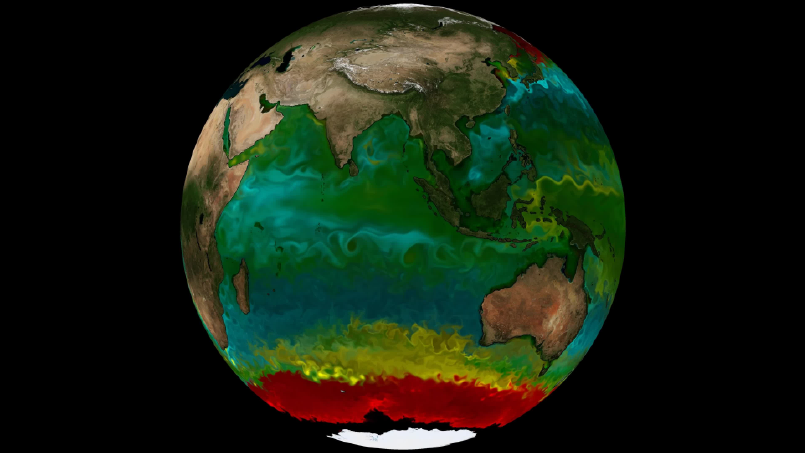Our research focuses on understanding the interactions between biogeochemical systems, freshwater, and ice in the coastal and open ocean
Ocean Carbon Cycling and Biogeochemistry
The ocean has absorbed roughly 40% of fossil fuel CO2 emissions since the beginning of the industrial era. The ocean uptake of CO2 changes the chemistry of seawater, which causes ocean acidification and can negatively impact marine ecosystems. We have developed the NASA-funded global-ocean, data-assimilative ocean biogeochemistry state estimate (ECCO-Darwin) to understand how interactions between physical, chemical, and biological processes influence ocean-land-atmosphere carbon exchange and marine ecosystems on regional-to-global scales.
Image credit: MIT Darwin Project
Estuaries, Fjords, and Land-to-ocean Processes
Estuaries and fjords act as mixing zones, regulating the exchange of freshwater, carbon, and nutrients between the coastal ocean and terrestrial systems. We are focused on modeling and understanding the physical and biogeochemical processes that occur within these special regions, which are critical for predicting future changes in ocean chemistry, ice-sheet dynamics, marine ecosystems, and global sea-level rise.
Image credit: Dustin Carroll
Ocean-ice Interactions
Melting of ice due to warming ocean waters drives the retreat and destabilization of sea ice and marine-terminating glaciers in the Arctic and Antarctica. We combine shipboard and mooring observations, theory, and high-resolution numerical ocean models to understand the complex interactions between coastal ocean physics and glaciers, terrestrial runoff, and sea ice and icebergs.
Image credit: Dustin Carroll




